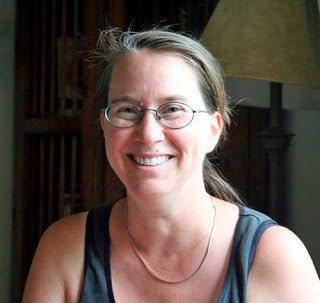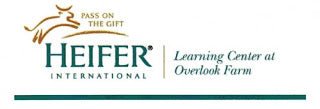In a Small Village in India, Mukund Naidu is Making Fabulous Cheese!
Ricki’s daughter, Sarah, manages our Facebook account (and does a fabulous job!). Recently, she told me about a friend who was sending in some great comments and pictures. She thought there might be a story there, and, of course, there was. It was Mukund, a 39 year old cheese maker in India . . .
 Q: Why and how did you first start making cheese?A: To answer this question, I will have to go back to my childhood in the 70’s. As a child, I hated plain milk or malted milk. But I absolutely loved ice-creams and the flavored milks (chocolate, strawberry, and pistachio) sold in the school cafeteria.
Q: Why and how did you first start making cheese?A: To answer this question, I will have to go back to my childhood in the 70’s. As a child, I hated plain milk or malted milk. But I absolutely loved ice-creams and the flavored milks (chocolate, strawberry, and pistachio) sold in the school cafeteria.
The only cheese available in India those days was a processed cheese made by AMUL, which is a household name in India.
The other cheese product in India was ‘Paneer’ which is sometimes mistakenly labeled as cottage cheese. Millions of Indians have grown up eating these milk products. AMUL in India is like KRAFT in the USA.
In 1991 while studying mechanical engineering, I decided that I needed a change of lifestyle as I was fed up of city life. So I headed to Kodaikanal, up in the mountains in South India. I joined a farm which was owned by an Italian American expat- Patrizia Norelli and managed by a New Zealander- David Hogg.
The farm was a coffee estate and a stud farm with thoroughbred race horses, cows, Border collie dogs, cats and Fantail pigeons. Adjoining the farm was a forest area known as the Palani Hills Biosphere, so we would have the occasional wildlife like wild boars, jungle fowl, and a few panthers visiting us and during the summer, elephants too.


There were a few cows (Holstein Fresian) that were being milked. Milk required for the farm was kept and the balance sold in town about 17 kms (10 miles) away. This involved an uphill hike (3 miles) and then catching the bus to town (7 miles).As the herd started increasing, it was decided that we should start making cheese to sustain the farm. Until then, the only cheese I knew of was AMUL processed cheese. So to find out that there were close to 1400 varieties of cheese in the world was an eye opener.
David (with a background in farming from New Zealand) started making cheese on a small scale by making fresh cheese. Later, when we received Ricki Carroll’s Book “Cheese making Made Easy” (now Home Cheese Making) and small zip lock pouches of bacterial culture, we used them to make ‘mother’ and ‘daughter’ cultures and we slowly graduated to making harder cheese like Gouda and farmhouse cheese.

One day, David brought over this cheese with a lot of blue mold all over it, that he had made and asked me to taste it. I was horrified, as in India anything with mold and fungus is thrown into the garbage bin and here I was being asked to actually eat it.
So I took a fork and using the tines, I started scraping the white ‘unspoilt’ part of the cheese. David was laughing his head off and coaxed me to eat the cheese as is. When I gave in and finally tasted the cheese, mold and all, I was astounded by the taste, the flavors. And I thought, wow, if this is cheese then this is what I need to make for the rest of my life. And so it began, my wonderful passion-filled romance with cheese.

The cheese I tasted was Roquefort. So unlike many who graduate from a mild to sharp, I started from sharp and went on to mild and piquant and every conceivable cheese flavor.David continued experimenting with fresh cheese and mold ripened cheese like Camembert and Brie, while I, using Ricki’s book and later Frank Kosikowski’s book ‘Cheese and Fermented Milk Foods’, focused on aged cheese like Gouda, Edam, Montasio, Romano, and Parmesan.These became our standard products that we sold to visitors and tourists in Kodaikanal and in retail outlets in larger cities and also various consulates including the American consulate in Chennai.
Q: Did you leave the farm or are you still there?
A: There comes a time in every person’s life, when they feel a stirring in their bones and a hunger for experience and expansion of knowledge. Such was the case with me and it happens on a regular basis. I left the farm in June, 2001, as I needed to expand my knowledge of cheese making and to not just keep making a few types of cheese. From then on, I worked in a few places and I also did some consulting work for a few small companies that make cheese.Q: Do you work in the cheese industry?
A: Yes, I do work in the cheese industry. Let me elaborate. Although India is the largest producer of milk in the world, a huge percentage of that is still sold as liquid milk and curd/yogurt and some is converted into paneer, ice cream etc. Only about 5 -10% gets converted into cheese.
Of this cheese percentage, about 98% are into production of ‘pizza’ cheese (which everyone calls ‘mozzarella’ here!!!) which is used for pizzas, of course. Only 2% is converted into artisanal cheese by about 6-9 cheese makers in the whole of India. One of them is yours truly.
I have a small unit in Goa (a backpacker’s version of Ibiza and Phuket) churning out about 50 kilos (125 pounds) of Mozzarella and 5-10 kilos (12-23 pounds) of Feta, Ricotta, Smoked Cheese and Mascarpone during the ‘season’ and which also makes a small amount of fresh cheese for hotels in Mumbai.
The market for cheese is growing. Selling is a problem due to various factors like a) lack of knowledge of product by customer, b) improper and expensive cold chain logistics, c) competition from imported cheese products in terms of quality, packaging and costs (as most farm products are subsidized in Europe), etc., etc.
While milk, curd, butter and clarified butter have been part of Indian culture and cuisine from ancient times (2000 BC) , cheese, per se, is not a part of Indian cuisine. Most cheeses have been made or discovered in Europe, like monks, for example, who created cheese as a means of sustenance. Another factor to be considered is that in Indian cooking there is an emphasis on spices (worth its weight in gold in its times) while in European cuisine, the flavor of the foods can be changed by changing the type of cheese or herbs, etc.
When I made the first authentic ‘pasta filata’ mozzarella cheese in India in 1994, apart from the ex-pats, very few had a clue as to what I was talking about, let alone pronouncing. It was later from 1998, onwards, when the markets were opened up to foreign investors, that a number of pizza companies like Pizza Hut, etc. came and blitzed the telly’s with advertisements. Now every one knows mozzarella (the pizza variety, not the pasta filata).
So, in a way, its quite a task to educate the customer as to what is traditional and what is not. Also, except for the foreign chefs, not many know the application of the product in the cuisine and would prefer to be safe and use the standardized industrial made, un-aged ‘cheddar’ rather than to actually buy an aged cheddar.
So, it’s an uphill task but many are now getting interested. A recent program on T and L channel called ‘Cheese Slices’ hosted by Will Studd caused quite an interest.Q. You look so young to have accomplished so much.
A. Well, I don’t know how young or old I look. I’m 39 at the moment. I started making cheese when I was 21. And like Robert Frost, I have miles to go before I sleep.
 Q: Why and how did you first start making cheese?A: To answer this question, I will have to go back to my childhood in the 70’s. As a child, I hated plain milk or malted milk. But I absolutely loved ice-creams and the flavored milks (chocolate, strawberry, and pistachio) sold in the school cafeteria.
Q: Why and how did you first start making cheese?A: To answer this question, I will have to go back to my childhood in the 70’s. As a child, I hated plain milk or malted milk. But I absolutely loved ice-creams and the flavored milks (chocolate, strawberry, and pistachio) sold in the school cafeteria.


























































































































































